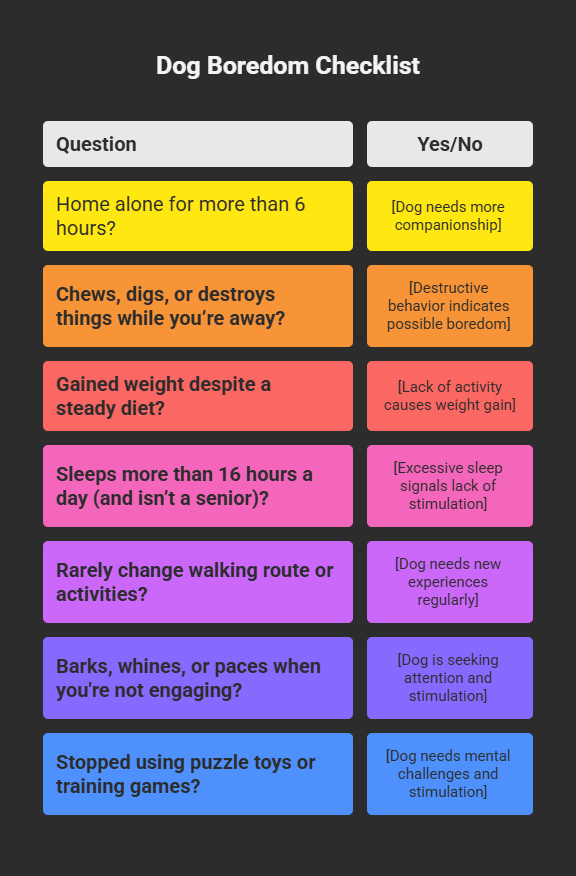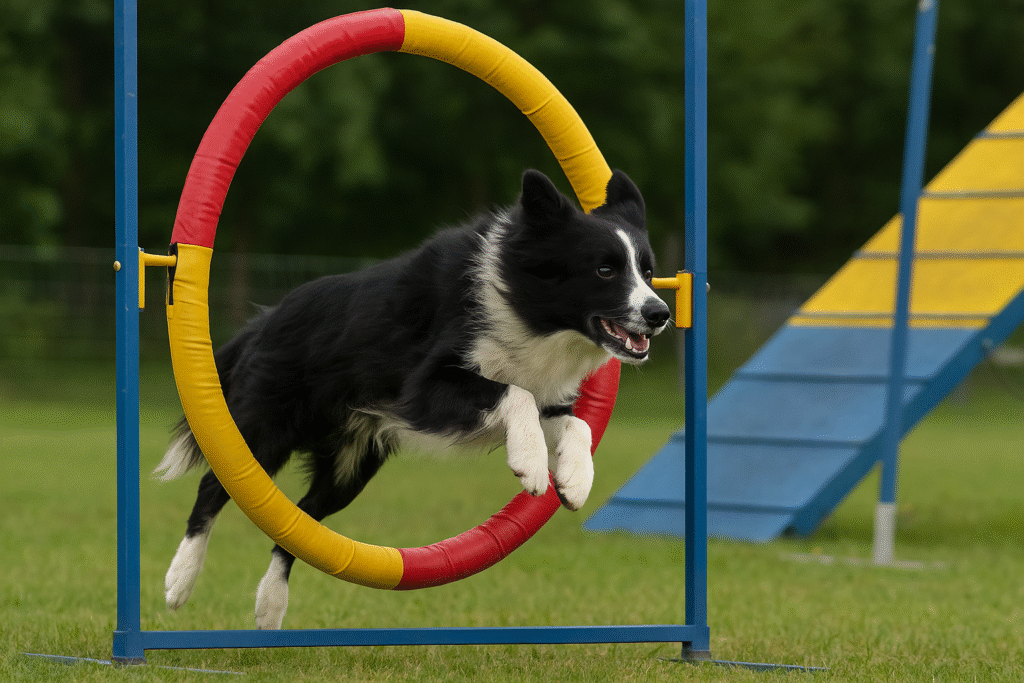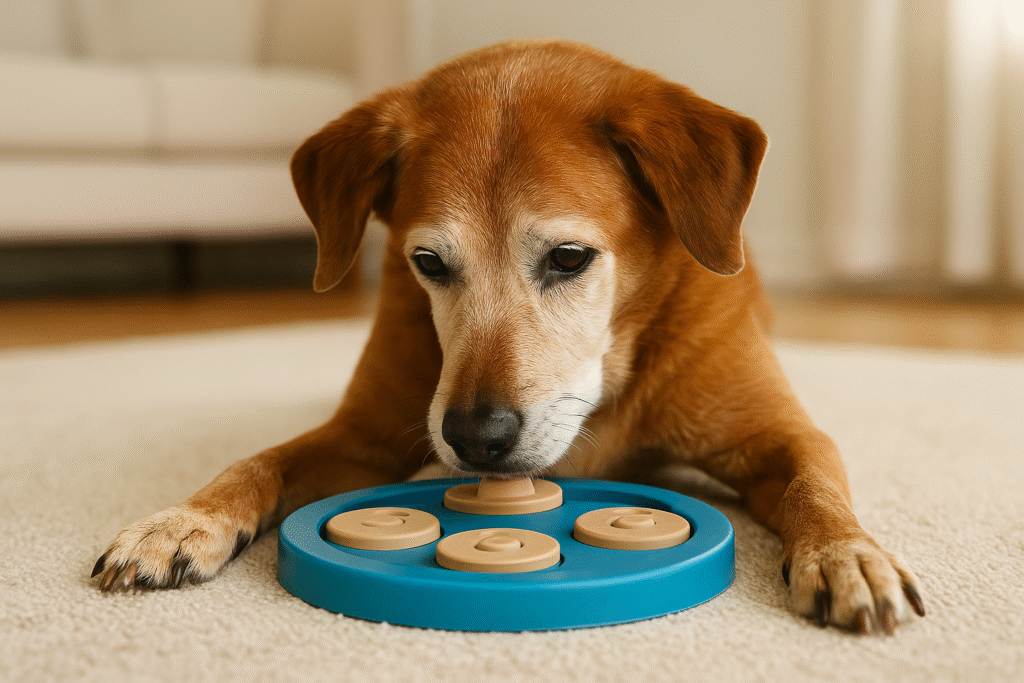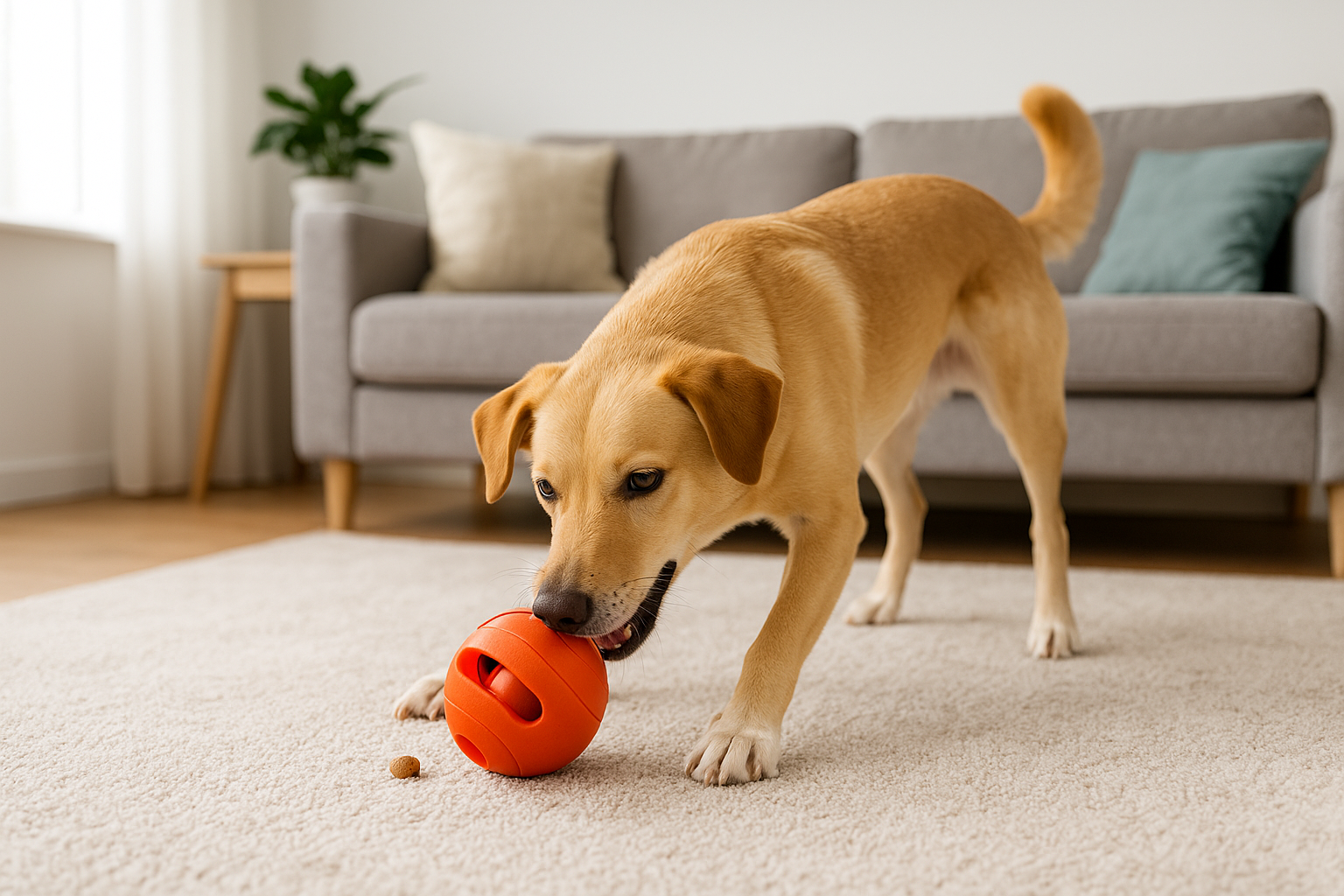Can Dog Boredom Cause Health Issues?
Medical Disclaimer: This article is for informational purposes only and does not replace professional veterinary advice. If you have concerns about your dog’s health, please consult your veterinarian.
Have you ever noticed your dog pacing, chewing furniture, or sleeping far too much? As a Canadian vet, I’ve seen how dog boredom can quietly lead to serious health concerns. From obesity and injuries to anxiety and cognitive decline, it’s more than just restlessness—it’s a wellness issue. Understanding the health effects of dog boredom can help you prevent problems before they start.

🐾 Key Takeaways: How Dog Boredom Affects Health
- Dog boredom isn’t just a behavior issue—it can lead to physical injuries, obesity, stress, and even long-term cognitive decline.
- Dogs show boredom through excessive sleeping, chewing, restlessness, and other destructive actions. Recognizing these signs early is key to prevention.
- Veterinary experts agree that mental stimulation is as vital as physical exercise for a dog’s health.
- Daily enrichment, breed-specific activities, and engaging toys help prevent health issues linked to dog boredom.
- This guide covers signs, risks, prevention tips, and the science behind dog boredom to keep your pup happy and healthy.
Table of Contents
What Is Dog Boredom?
Why Modern Dogs Get Bored
Dog boredom happens when a dog doesn’t get enough mental or physical stimulation to match their natural energy levels or instincts. As a vet, I often explain it to pet parents like this: if your dog was bred to herd sheep or retrieve birds, lounging on a couch all day won’t cut it. That mismatch can lead to frustration, stress, and eventually health issues.
Today’s domestic dogs often lack opportunities to express their natural behaviors—like sniffing, chewing, chasing, or problem-solving. When these needs aren’t met, dog boredom takes root. This isn’t just a matter of entertainment; it’s a welfare concern backed by growing scientific evidence.
Common Triggers of Dog Boredom
Here are common causes I see in clinical practice:
- Lack of physical activity: Especially in high-energy breeds like Border Collies, Huskies, or Labradors.
- Long periods alone: Dogs are social animals; too much isolation increases boredom.
- No mental challenges: Without toys, puzzles, or training, their brains get stale.
- Understimulating environment: A quiet home with no smells, sounds, or changes can dull their senses.
- Routine overload: Same walk, same time, same route—monotony contributes to dog boredom.
Research supports these triggers. A 2017 paper in Animal Behaviour emphasized that chronic under-stimulation leads to behavioral and physiological distress, confirming what we observe clinically.
How Dog Boredom Affects Health
Dog boredom doesn’t just make your pet grumpy—it can seriously affect their health. In my practice, I’ve seen dogs with untreated boredom develop everything from obesity to chronic anxiety. Here’s how it unfolds:
Physical Risks from Destructive Behavior
When dogs are bored, they often chew, dig, scratch, or tear things apart. While these behaviors seem like simple mischief, they can lead to:
- Lacerations or dental fractures from chewing hard objects like furniture legs or crates
- Gastrointestinal blockages from swallowing fabric, plastic, or stuffing
- Electrocution risk from chewing on power cords
- Injuries from digging or escaping, especially in bored working breeds
I once treated a young retriever who had swallowed half a sock after hours alone—boredom was the only “cause.” Surgery followed.

Obesity and Sedentary Lifestyle
Lack of stimulation often leads to inactivity. When dog boredom sets in, dogs tend to nap excessively or wander aimlessly. Without regular activity:
- They burn fewer calories
- Weight creeps up slowly
- Extra weight stresses joints and organs
PetMD warns that boredom contributes to obesity by encouraging overeating and inactivity—both difficult to reverse once habits form. Obesity increases the risk of:
- Diabetes
- Arthritis
- Heart disease
- Reduced lifespan
Mental Health Impacts
Mental health is as important as physical health—and dog boredom directly affects both. Chronically bored dogs can experience:
- Stress from unmet needs
- Separation anxiety, especially when left alone often
- Canine depression, manifesting as low energy or appetite
- Hyperactivity or compulsive behaviors, like spinning or pacing
Petcube notes that dog boredom may cause symptoms similar to clinical depression in dogs, and behavioral therapy may be required in advanced cases.
Long-Term Cognitive Decline
Dog boredom, when unrelieved for months or years, may even affect long-term brain health. Scientific studies like Burn (2017) suggest boredom reduces neural plasticity—the brain’s ability to adapt and learn.
Over time, this may contribute to:
- Poor learning and memory
- Reduced ability to cope with change
- Earlier onset of canine cognitive dysfunction (dog dementia)
Dogs need novel experiences and puzzles to keep their brains sharp. Without them, aging brains decline faster—something I’ve seen especially in older indoor-only dogs.

✅ 5-Minute Home Boredom Checklist
Not sure if your dog is experiencing boredom? Here’s a quick, vet-approved checklist you can run through in five minutes. If you answer “yes” to several, your dog may be battling dog boredom.
| Question | Yes/No |
|---|---|
| Is your dog home alone for more than 6 hours most days? | |
| Does your dog chew, dig, or destroy things while you’re away? | |
| Has your dog gained weight despite a steady diet? | |
| Does your dog sleep more than 16 hours a day (and isn’t a senior)? | |
| Do you rarely change your dog’s walking route or activities? | |
| Does your dog bark, whine, or pace when you’re not engaging with them? | |
| Have you stopped using puzzle toys or training games? |
Results:
- 1–2 “Yes”: Your dog may be slightly under-stimulated. Add variety.
- 3–4 “Yes”: Moderate dog boredom—time for a lifestyle refresh.
- 5+ “Yes”: Your dog is likely experiencing health-affecting boredom. Plan enrichment today.
Even simple changes—like rotating toys or teaching a new trick—can make a difference.

🐶 Signs Your Dog Might Be Bored
Recognizing the signs of dog boredom early can help prevent more serious health or behavior issues. As a vet, I often see these signs dismissed as “just being naughty”—when they’re actually a cry for stimulation.
Behavioural Clues of Dog Boredom
If your dog displays several of the following, boredom could be the culprit:
- Excessive chewing: Especially on inappropriate items like shoes, doors, or furniture
- Restlessness or pacing: Often seen when left alone or during quiet hours
- Over-sleeping: Dogs sleep about 14 hours a day on average, but more than 16 without medical cause can signal under-stimulation
- Digging indoors or outdoors: A natural outlet for pent-up energy
- Vocalization: Barking, whining, or howling with no clear trigger
- Stealing household items: Often linked to attention-seeking behavior
- Hyperactivity: Sudden zoomies or jumping on guests
These behaviors can overlap with separation anxiety or medical issues, so a vet check-up is always wise if something seems off.
When to See a Vet or Trainer
If you’re unsure whether it’s boredom or something more, consult:
- A veterinarian to rule out pain, thyroid issues, or neurological causes
- A certified trainer or behaviorist if behaviors persist despite enrichment
- A canine nutritionist if weight gain or appetite shifts occur
For example, excessive sleeping could also indicate hypothyroidism—common in middle-aged dogs. Always better to rule out health issues before assuming it’s “just boredom.”
🧠 Vet-Approved Ways to Prevent Dog Boredom
Preventing dog boredom isn’t about buying the most expensive toy—it’s about creating a stimulating, enriched lifestyle tailored to your dog’s personality, breed, and energy level. Here’s how I help pet parents design boredom-busting routines.
Daily Exercise & Mental Stimulation
Dogs need both physical activity and mental engagement every day. The average dog requires at least:
- 2 walks per day (30–60 minutes total)
- 15–30 minutes of training, puzzles, or games
- Opportunities to sniff, chase, dig, or solve problems
Sniffing alone activates a dog’s brain. Letting your dog “sniffari” in a new environment can do wonders.
Breed-Specific Enrichment Ideas

Some dogs need more specialized stimulation. Here’s a quick guide:
| Breed Type | Enrichment Ideas |
|---|---|
| Herding breeds (e.g., Border Collies) | Treibball, herding games, frisbee |
| Hunting/retrieving breeds (e.g., Labs) | Fetch, scent games, dock diving |
| Sighthounds (e.g., Greyhounds) | Flirt poles, fast sprints, chasing games |
| Terriers | Dig pits, rodent hunting toys, tug-of-war |
| Toy breeds | Puzzle feeders, hide-and-seek, agility |

Interactive Toys & Puzzle Feeders
These are excellent tools to fight dog boredom while you’re away. I often recommend:
- KONG Classic (filled with frozen peanut butter or kibble)
- Outward Hound Puzzle Toys
- Snuffle mats to mimic foraging
- Treat-dispensing balls
A great Canadian option is the KONG Extreme Dog Toy, which keeps even power chewers engaged for hours.
Training Games & Bonding Activities
Training isn’t just about obedience—it’s mental exercise. Try:
- Learning a new trick each week
- Name recognition games with toys
- Hide-and-seek using treats
- Obstacle courses in your backyard or hallway
These activities deepen your bond and give your dog a “job,” which is especially important for working breeds.
Social Interaction or Doggy Daycare
Many dogs, especially social breeds like Labs or Goldens, thrive on interaction. Consider:
- Dog walkers during workdays
- Supervised playdates with known dogs
- Doggy daycare 1–2 days a week for high-energy dogs
This prevents isolation—a major trigger of dog boredom.
💰 Typical Costs of Enrichment Options in Canada
Providing enrichment doesn’t have to break the bank. Here’s a general guide to what you might expect to pay across Canada:
| Item/Service | Estimated Cost (CAD) | Notes |
|---|---|---|
| Puzzle toys (KONG, snuffle mats) | $15–$40 | One-time cost, reusable |
| Interactive treat dispensers | $25–$60 | Brands like Nina Ottosson offer various difficulty levels |
| Dog walker (30 mins) | $20–$30 per walk | Consider weekly packages for savings |
| Doggy daycare | $35–$60/day | Rates vary by location and dog size |
| Scent or agility classes | $150–$250 for 6–8 sessions | Fun for high-drive breeds |
| Flirt poles/dig boxes (DIY) | $10–$30 | Inexpensive homemade enrichment tools |
Many enrichment tools pay off long-term by preventing costly vet visits for injuries, obesity, or anxiety-related issues caused by dog boredom.
Tip: Look for local pet stores or shelters that offer free enrichment classes or gear swaps.
❓ Frequently Asked Questions About Dog Boredom
1. How long can I leave my dog alone without them getting bored?
Most dogs can tolerate 4–6 hours alone if they’ve had proper exercise and mental stimulation beforehand. Beyond that, the risk of dog boredom—and related behavior issues—increases. Use puzzle feeders, snuffle mats, or hire a walker if you’re away longer.
2. Are some breeds more prone to dog boredom?
Yes. Working, herding, and hunting breeds—like Border Collies, Belgian Malinois, Beagles, and Huskies—have higher stimulation needs and are more prone to dog boredom. Toy breeds or low-energy dogs may tolerate routine better but still need engagement.
3. Can dog boredom cause depression?
Yes. Chronic boredom can lead to canine depression, with symptoms like lethargy, loss of interest in play, changes in appetite, or excessive sleeping. Always rule out medical issues with your vet first.
4. What are the best toys to reduce dog boredom?
Top options include:
- KONG Extreme (for food stuffing)
- Outward Hound puzzles
- Snuffle mats
- Flirt poles
- Lick mats with frozen treats
Toys that involve food or mimic problem-solving are especially effective.
5. Is dog boredom common in senior dogs?
Yes, and it often goes unnoticed. Older dogs may have less energy but still need variety. Slow scent walks, gentle puzzles, or learning new tricks can keep their minds sharp and reduce dog boredom in their golden years.
🏁 Conclusion: Don’t Underestimate Dog Boredom
Dog boredom isn’t just a minor inconvenience—it’s a real threat to your pet’s physical and mental health. As a practicing Canadian veterinarian, I’ve seen firsthand how untreated boredom leads to injuries, obesity, and even depression in dogs.
The good news? It’s preventable. With consistent enrichment, exercise, and attention to your dog’s individual needs, you can greatly improve their quality of life.
Whether it’s rotating puzzle toys, exploring new walking trails, or teaching a silly trick, small efforts can make a huge difference. Stay observant, stay creative, and remember: a stimulated dog is a happy, healthy dog.





Pingback: Canine Compulsive Disorders: 7 Breakthrough Insights